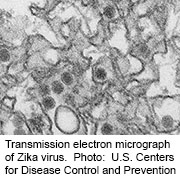Scientists used data on births, climate, and other mosquito-borne infections to estimate outbreak
MONDAY, July 25, 2016 (HealthDay News) — Up to 1.6 million childbearing women in Central and South America may be at risk for infection with the Zika virus by the end of the first phase of the epidemic, according to a letter published online July 25 in Nature Microbiology.
Andrew Tatem, a geographer at the University of Southampton in the United Kingdom, and colleagues projected the spread of Zika by assessing its likely impact at very local levels — a scale of 5 km² — and combined this local data to model regional infection rates. The researchers also drew on data from prior outbreaks of similar mosquito-borne infections such as dengue. They combined that data with information on climate, pregnancy, and birth data and other factors to calculate their estimates.
An estimated 80 percent of Zika infections do not cause symptoms, the researchers noted. The large number of symptomless cases “largely invalidates [prediction] methods based on case data and presents a formidable challenge for scientists,” Tatem said in a university news release. The researchers also estimate there could be a total of more than 90 million Zika infections overall in Latin America and the Caribbean. Brazil is expected to have the largest number of infections — by more than three-fold — due to its size and favorable conditions for transmission of the virus.
“Projections such as these have an important role to play in the early stages of an epidemic, when planning for surveillance and outbreak response is actively underway both internationally and locally,” the authors write.
Full Text
Copyright © 2016 HealthDay. All rights reserved.








